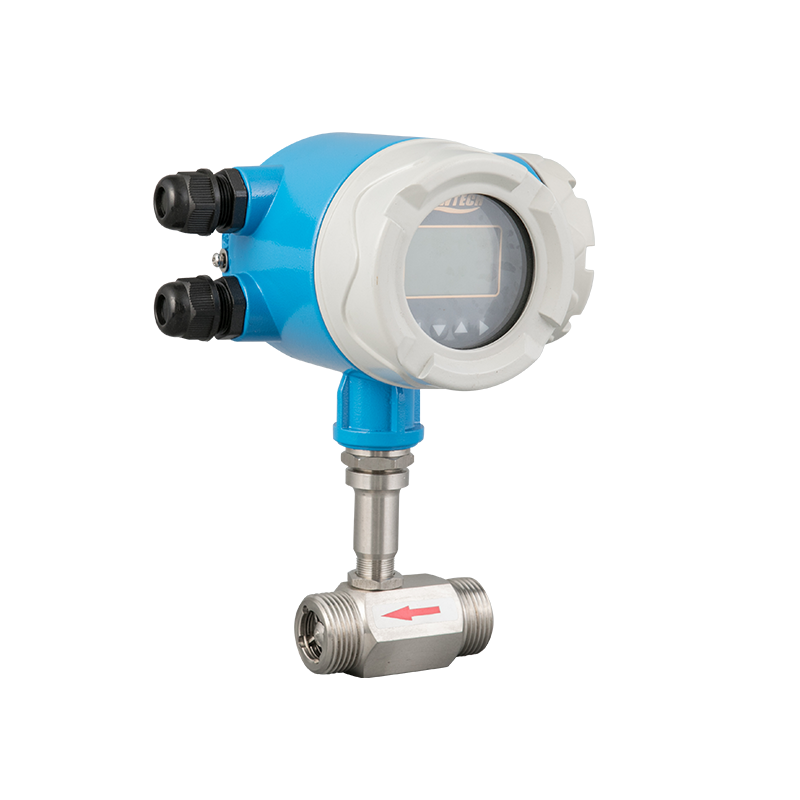Ultrasonic flowmeter Menghui can generally be divided into three parts: field sensor (probe), transmission cable, and display host. The sensors are clamp-on, plug-in, and French-style (i.e. pipe segment type). The display main unit is fixed and portable. The portable main unit can be equipped with external clamp-type sensors to compare the fixed on-line ultrasonic flowmeters (on-site calibration). ) And the installation is very simple. External clamp ultrasonic flowmeter Menghui's sensor-during installation, the intended installation position of the outer wall of the tube needs to be polished and smooth, and then the sensor (probe) is attached to the outer wall of the tube with a couplant and then fixed with a special clamping device. This method can conveniently measure the water flow outside the pipe and is also suitable for portable use. The disadvantage is that it is easy to affect the stability of the measurement due to improper handling of the coupling agent, which may cause a malignant change in the signal receiving state. The fixed external clamp type ultrasonic flowmeter has the characteristics of accuracy, stability, and easy operation, which are widely praised in the market. It is mostly used to measure the flow of large pipelines. It is easy to use. It can be measured only by clamping the sensor to the pipeline in a prescribed manner, without breaking the pipeline, and the measurement accuracy is relatively accurate. The sensor probe with IP68 protection has a longer service life and can work stably without replacement within 5-6 years. The external clamp ultrasonic flowmeter requires high installation personnel, and the level of installation directly affects the measurement accuracy. There will be a lot of maintenance work in the future. After a long time of operation, the failure of the couplant or the change of the sensor position will affect the measurement, and regular maintenance is required.
(1) Before installing the external clamp ultrasonic flowmeter, you should understand the site conditions, including:
1. What is the distance between the installation of the sensor and the host;
2. Pipe material, pipe wall thickness and pipe diameter;
3. Pipeline age;
4. The type of fluid, whether it contains impurities, bubbles, and whether the tube is full;
5. Fluid temperature; (plug-in sensor pipeline pressure)
6. Whether there are interference sources at the installation site (such as frequency conversion, high-voltage cable field, etc.);
7. Four seasons temperature in the place where the host is placed;
8. Whether the power supply voltage used is stable;
9. Do you need remote signal and type;
According to the on-site situation provided above, the manufacturer can configure it according to the on-site situation, and can also make special models if necessary.
(2) Choose the installation location of the clamp-on ultrasonic flowmeter
The selection of the installation pipe section has a great influence on the test accuracy. The selected pipe section should avoid interference and eddy currents, which have a greater impact on the measurement accuracy. Generally, the selection of the pipe section should meet the following conditions:
1. Avoid installing machines on water pumps, high-power radio stations, frequency conversion, that is, where there is strong magnetic field and vibration interference;
2. Choose a pipe section that should be uniform and dense and easy to transmit ultrasonic waves;
3. There must be a long enough straight pipe section, the upstream straight pipe section of the installation point must be greater than 10D (note: D=diameter), and the downstream must be greater than 5D;
4. The upstream of the installation point should be 30D away from the pump;
5. The fluid should fill the pipe;
6. There should be enough space around the pipeline to facilitate the operation of on-site personnel.
www.kio-tech.com







 English
English 中文简体
中文简体 русский
русский España
España